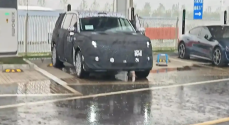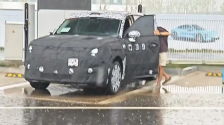BYD is considered the king of electric cars in China, but their high-end vehicles can hardly outsell even some new electric car companies, which shouldn't happen to a company with such a huge market share and technology. This is not a crazy comment, it's a worry for China's top electric car companies.
It really isn't. If you don't know anything then stop wasting our time here. China has a very competitive market where companies like Li Auto, HW and several others got into the large SUV market at least 2 years ahead of BYD and Geely's "premium brands" are severely undercutting BYD on pricing.This is the sales data of BYD Fangchengbao. It can be seen that the sales of the two models in the RMB 240,000 to RMB 430,000 range are also mediocre.
BYD exploded from a company selling 400k per year to like 5.5 to 6 million this year, so it did that by focusing on mass market models first. It simply did not have the resources to expand both mass market and large SUV/Sedan market at the same time. It also did not engage in a mass marketing campaign or dealership expansion for its premium brands of FCB, YangWang and Denza.
While this was going on, Huawei spent a lot of money in building up dealer network for AITO brand + Mate 60 really against raised HW brand.
At the same time, Xiaomi created the model of the year in 2024 with Su7 and then the model of the year in 2025 in Yu7. Both extremely competitive products that displaced Tesla model 3 and Y. These are great things to be happening.
BYD exports are now the second highest amongst Chinese brands and those get huge margins. FCB and Denza models are going to be launched in large numbers in oversea market in Q3/Q4. Z9GT will be far more popular in Europe than in China. Bao5 will be more popular in Australia and other large empty countries than China. D9 is already overwhelmingly popular in ASEAN countries. We are going to get N8L, Tai7 and 2026 version of N7 soon. What is with the pessimism?
If anything BYD is actually losing far more share on the low end of the market because Geely keeps undercutting it in pricing.





